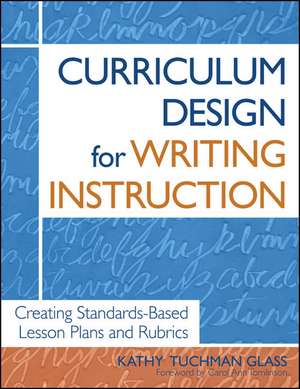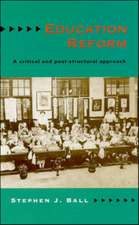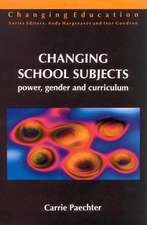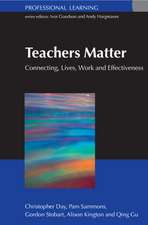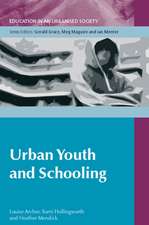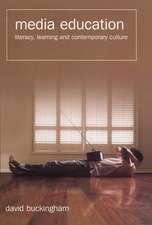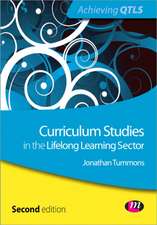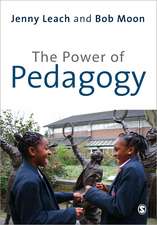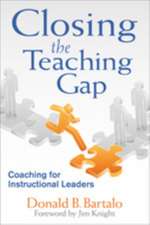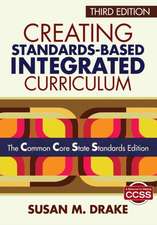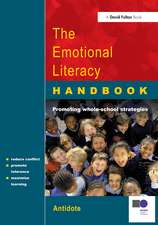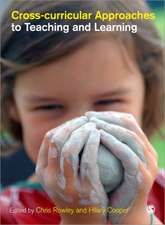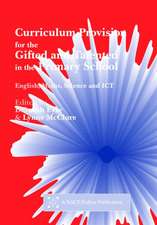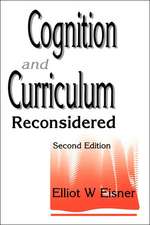Curriculum Design for Writing Instruction: Creating Standards-Based Lesson Plans and Rubrics
Autor Kathy Tuchman Glassen Limba Engleză Paperback – 17 ian 2005
2. Creating a teacher rubric with a clear set of criteria for writing assessment: What are the key criteria for achieving these standards and assessing students?
3. Crafting a student checklist to guide students through the unit and self-assess: What do students need to know and learn as they progress through the unit and how will they be assessed?
4. Designing lessons to achieve standards: How do I help my students meet the criteria?
The numerous strategies, examples and photocopiables focus on writing at the primary level, but are easily adapted for use by secondary teachers of science and social studies.
Preț: 335.81 lei
Nou
64.26€ • 66.69$ • 53.71£
Carte tipărită la comandă
Livrare economică 15-29 martie
Specificații
ISBN-10: 1412904560
Pagini: 264
Dimensiuni: 216 x 279 x 14 mm
Greutate: 0.6 kg
Ediția:New.
Editura: SAGE Publications
Colecția Corwin
Locul publicării:Thousand Oaks, United States
Recenzii
This book effectively walks educators through the standards-based lesson design process in a way that is clear, compelling, and achievable while simultaneously building content knowledge and extending understanding.
Cuprins
Acknowledgments
Introduction: The Tenets of Curriculum Design
Why Are Standards Important to Curriculum Design?
The Teacher Rubric (Scoring Guide) and Student Checklist Play a Crucial Role
Two Scenarios: Curriculum Design Process Analogy
Curriculum Design Elements
Identify Grade Level Writing Standards
Create a Teacher Rubric With a Clear Set of Writing Criteria
Craft a Student Checklist to Guide Students and to State Objectives
Design Lessons to Achieve Standards
One More Connection to Drive Home the Point
1. Identify Grade Level Content Standards (Part 1)
Step-by-Step Details for Identifying Grade Level Content Standards
Target Writing Type (Application)
Identify Supporting Standards
Note Existing Lessons and Resources
Determine Timing of Unit
Standards Identification Samples
Personal Narrative/Fall (2nd grade)
Slavery Journal/Spring (8th grade)
2. Create/Revise a Rubric (Part 2)
Suggestions to Improve Writing Program
Create and Revise Rubrics
Collect Student Anchor Papers
Avoid Bias
Use Student Scores to Inform Your Instruction
Rubric Definition
Rubrics (Six Traits)
Rubric Sample and Elements
What Rubrics Are Included in This Chapter?
Do Teachers Need a Rubric for Each Assignment?
Do Students Use These Rubrics?
How Many Traits and Their Elements Are Included in a Writing Assignment?
Creating a Teacher Rubric for Your Targeted Writing Assignment
Step-by-Step Details for Designing a Rubric
Peruse Rubrics
Identify Elements for Each Trait
Compile All Elements to Create a Rubric
Revise Rubric Content
3. Craft a Student Checklist (Part 3)
Uses for Student Checklist
How to Introduce a Student Checklist
Students Use the Checklist to Guide Them While Writing
Step-by-Step Details for Creating a Student Checklist
Quick Review of Suggestions for Using a Checklist
4. Design/Refine Lessons (Part 4) and the Design Process at Work
Target Your Search to Find Lessons
Step-by-Step Details for Designing Lessons
Embrace Your Student Checklist Like a Friend
Search for Lessons
Organize Your Lessons in Sequential Order
Review Lessons
Select Student Samples
The Parts as a Whole: Comprehensive Lessons Utilizing the Complete Process From Standards Identification to Actual Lessons
Single Paragraph Writing for Personal Character Description Using An Anteater Named Arthur by Bernard Waber
Multi-Paragraph Writing for Personal Character Description Emphasizing Detailed Examples to Support Personality Traits
Single- or Multi-Paragraph Writing for Fictitious Character Description Focusing on Sensory Details
Response to Literature Expository Composition
5. Writing Process and Recordkeeping
Writing Process Steps
Revision Sheets
Recordkeeping
Whole Class Writing Performance Record
Individual Student Writing Performance Record
Emphasizing the Importance of Examining Student Work
6. Using the Curiculum Design Process for Science and Social Studies (and Electives)
Standards and Worksheet Samples
Step-by-Step Process of How to Link Content (or Criteria) With Writing Lessons
Miscellaneous Social Studies and Science Writing Activities and Projects
Writing Genre Suggestions
7. Time Saving Options for the Curriculum Design Process
Colleagues
Use a Rubric Only
Convert the Student Checklist Into a Scoring Mechanism
8. Reviewing the Steps in the Curriculum Design Process
Identify Grade Level Content Standards
Create/Revise Rubric
Craft a Student Checklist
Define or Revise Lessons
Resources
Theory, Research, Practice/Curriculum Design Models
Six Traits Support
Lessons, Activities, Assessments
Emphasis on Rubrics
Notă biografică
Kathy Glass is a former teacher who consults and presents nationally with K-12 teachers and administrators at schools, districts, conferences, and county offices of education. She offers a blend of professional development (PD) topics to target audiences in areas affecting curriculum and instruction. To deliver customized PD, she assists educators with strategic planning to determine objectives. Then she tailors PD based on requested topics such as, but not limited to:
· highlights of the ELA Common Core Standards
· implementation of the ELA Common Core or other standards-based curriculum using a backward design approach
· essential understandings and guiding questions to frame curriculum and instruction
· differentiated tools and instructional strategies
· pre-, formative, summative, and self-assessments
· alignment of six-traits writing instruction and assessment to curriculum goals
· unit and yearlong curriculum maps
· text-dependent questions to facilitate close reading, and more.
To help educators directly translate what she presents into effective classroom practice that impacts students, Kathy can provide a variety of PD opportunities (e.g., presentations, lesson demonstrations and modeling, coaching, collaborative unit design, etc.).
She is the author of six books: Mapping Comprehensive Units to the English Language (ELA) Arts Common Core Standards, 6-12 (May, 2013); Mapping Comprehensive Units to the ELA Common Core Standards, K-5 (© 2012); Lesson Design for Differentiated Instruction, Grades 4-9 (©2009); Staff Development Guide for the Parallel Curriculum (©2009); Curriculum Mapping: A Step-by-Step Guide to Creating Curriculum Year Overviews (©2007); and Curriculum Design for Writing Instruction: Creating Standards-Based Lesson Plans and Rubrics (©2005). In addition, Glass has served as a reader and reviewer for Reader¿s Handbook: A Student Guide for Reading and Learning (2002, Great Source Education Group) and as a contributing writer and consultant for the Heath Middle Level Literature series (1995, DC Heath and Co). Website: www.kathyglassconsulting.com; email: kathy@kathyglassconsulting.com
